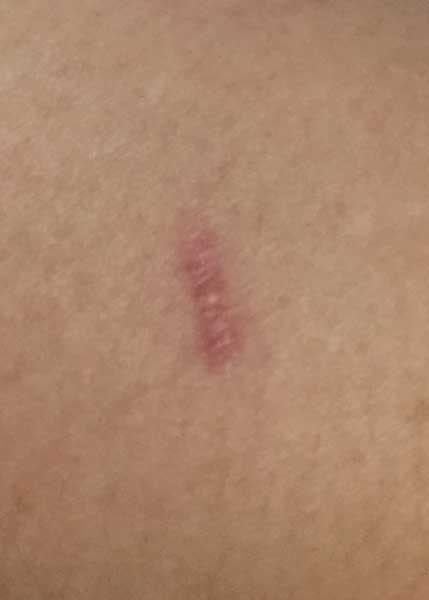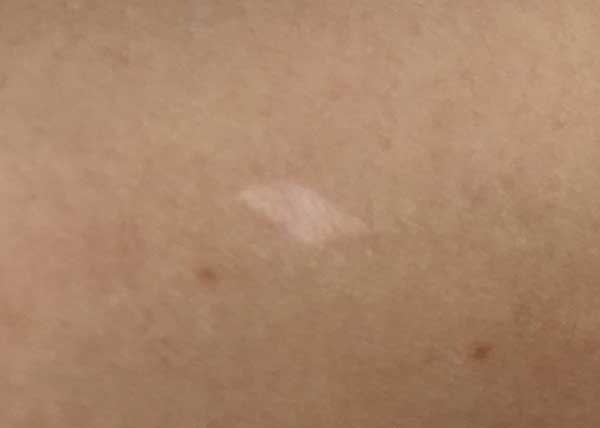Will tattooing cover up a scar?
Tattooing does have a role in scar camouflage, but it must be done after the scar has completely matured. Scars may be raised up and appear red or purple during the initial healing period. They then begin to settle over a period of 6-12 months, eventually becoming flat. The final scar may be lighter than the surrounding skin (hypo-pigmented) or darker than the surrounding skin (hyper-pigmented). Hypo-pigmented scars may benefit from tattooing, which essentially adds pigment to match the surrounding skin. This should be done on un-tanned skin, so the scar is pigmented the correct color. Remember, however, that if the surrounding skin is exposed to sun, the resulting tan will make the scar more noticeable.

hyper-pigmented scar

hypo-pigmented scar
In contrast to a hypo-pigmented scar, a hyper-pigmented scar is darker than the surrounding skin. In this case the treatment is to remove pigment rather than adding it. This can be done with laser or broad-band light (BBL) treatments. I would recommend waiting at least a year to allow your scar to mature, and then seeing a Board-Certified Plastic Surgeon to evaluate your scar. He or she can recommend the best course of treatment, and refer you to a tattoo artist with experience in scar camouflage if necessary.
